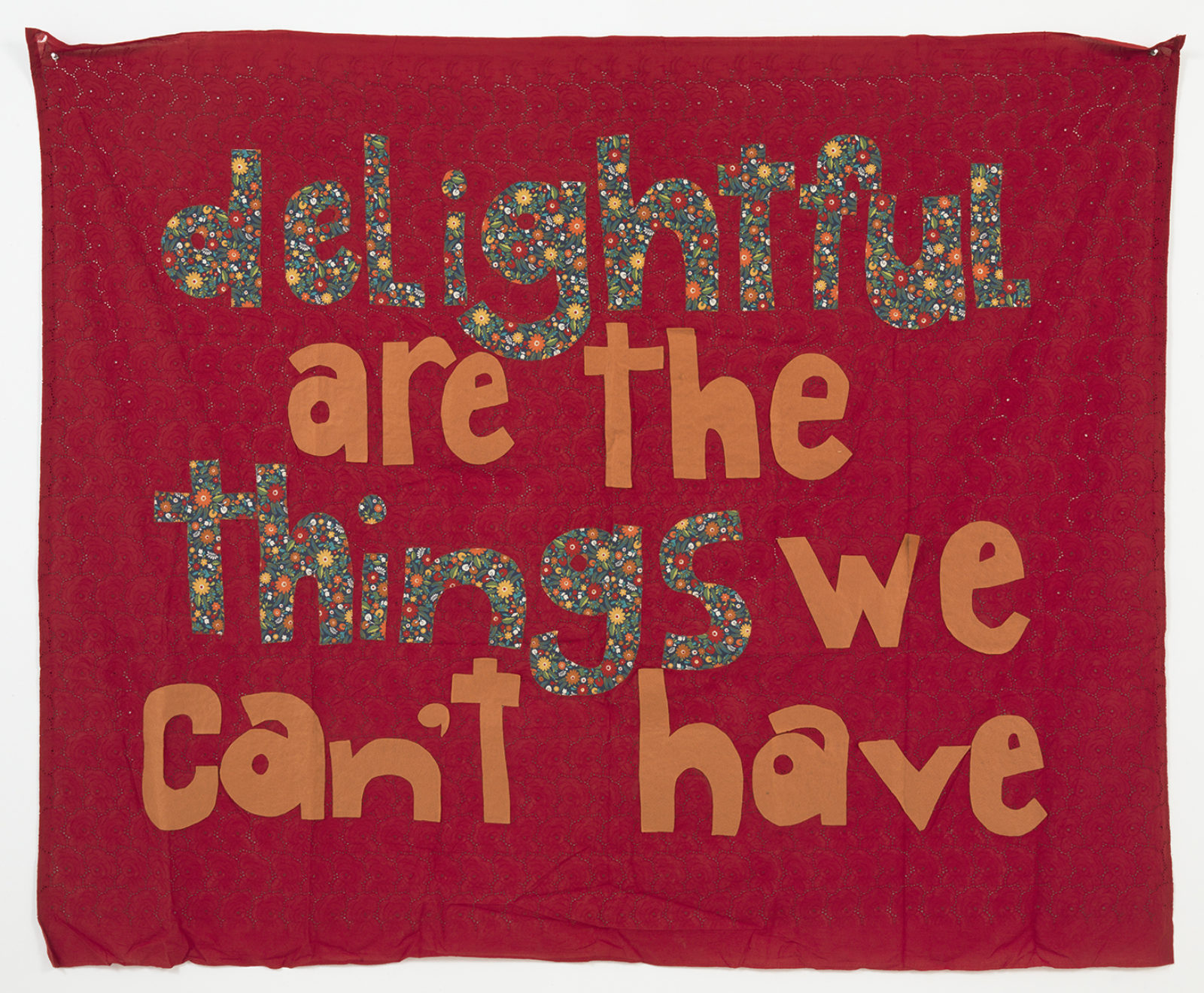

















![Ignatios, converso no seio de Cristo [Ignatius, Conversion in the Bosom of Christ]](https://storage.googleapis.com/visualaids-galleries/galleries/threading-global-movements/_fullWidth/leonilson__0013__export_200228_161038_1.jpg)
![O ilha [The Island One]](https://storage.googleapis.com/visualaids-galleries/galleries/threading-global-movements/_fullWidth/leonilson__0001__export_200228_161033_1.jpg)
![Puros e duros [Pure and Hard]](https://storage.googleapis.com/visualaids-galleries/galleries/threading-global-movements/_fullWidth/leonilson__0004__export_200228_161034_1.jpg)

![Ninguem [Nobody]](https://storage.googleapis.com/visualaids-galleries/galleries/threading-global-movements/_fullWidth/leonilson__0010__export_200228_161042_1.jpg)









featured gallery for March 2020
Threading Global Movements
Threading Global Movements: HIV and AIDS narratives in craft
In response to the exhibition Feliciano Centurión: Abrigo at the Americas Society (on view until May 16) and the recent retrospective of Nicolas Moufarrege’s work at the Queens Museum, web gallery curator Rowan Toth places Centurión and Moufarrege’s work in dialogue with other members of the Visual AIDS Artist Registry:
The choice to work in a craft medium is one of cultural significance, as practices like embroidery and knitting are rooted in gendered tradition. What does it mean to be a queer, male-bodied, HIV-positive artist working with textiles and thread, and how can this medium be used to talk about identity in this regard? Each of the artists in this month’s web gallery approach this question from a different perspective. Nicolas Moufarrege’s embroidered canvasses are influenced by both popular American culture and Moufarrege’s youth in Egypt and Lebanon, incorporating elements from all facets of his diasporic identity as a gay person of color living with HIV. The Truth About John The Baptist is a synthesis of these two interests, featuring a Silver Surfer-esque figure standing alongside Arabic calligraphy. His Banana Pudding is a campy sort of nod to both gay culture and seropositivity, ‘banana pudding’ in this context being a double entendre referring to the dessert as well as ejaculate.* These kitsch sensibilities are reiterated in Jonathan Molina-Garcia’s Fire Island Needlepoint, which turns a collage of images from around Fire Island, a traditionally gay male haven, into a relic that looks to be out of a grandmother’s house. Ben Cuevas’ Knit PrEP similarly turns the iconographic pill into a throw pillow, taking a major pharmaceutical drug and rendering it useless. These artworks reclaim pop art as being not only rooted in mainstream popular culture, but also queer culture as well. Vasilios Papapitsios repurposes underwear in his INTIMACY ISSUES series and uses it as a canvas for disclosing his seropositive status. In her quilted works, Jessica Whitbread further reinterprets the traditionally feminine legacy of needlework from a queer, poz woman’s perspective. Each of these artworks reclaim both pop art and craft media as being not just rooted in mainstream popular culture, but also objects of queer culture as well.
Similar to Moufarrege’s ability to seamlessly incorporate cultural references into his work, both Leonilson and Felicano Centurión explore Latinx identity and histories in their art. Centurión’s Surubí is a celebration of native Latinx culture, depicting a species of catfish that lives in the rivers of Paraguay. Its title is derived from the word for the fish in Guaraní, an indigenous language that Centurión himself spoke growing up and is still today spoken throughout Paraguay. Leonilson takes a different approach to language in his piece O ilha [The Island One], which eschews grammatical convention by assigning a masculine article to a feminine noun. Both artists touch on themes of Catholicism, like in Leonilson’s Ignatios, converso no seio de Cristo [Ignatius, Conversion in the Bosom of Christ]. From these artists who lived and worked in two South American countries with a heavy history of Jesuit colonization, musings on Christian faith take on a greater meaning. Jonathan Molina-Garcia embodies a similar spirit in his contemporary artworks that talk about diaspora and being Latinx in the 21st century, taking on a tone that definitively speaks to today’s politically active generation. His Superpasaporte speaks to struggles with access and safety when traveling in foreign spaces as a person of color and reimagines government documents as a source of protection rather than an object of violence.
Recontextualizing passports, PrEP, and language itself, all of the aforementioned artists combine craft with culture to recast needlework as a radical art form. Though often associated with the wealthy ruling class, this month’s web gallery illustrates that crafts like embroidery and knitting can be brought back into their varied historical contexts and used to heal, tell stories, and express identity.
*DUETS: Dean Daderko & Elaine Reichek In Conversation on Nicolas A. Moufarrege
